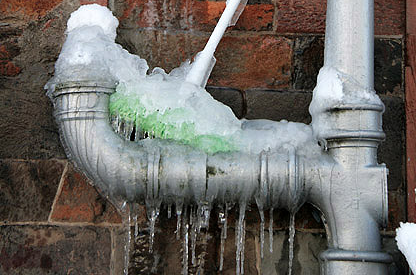Ways to Defend Your Pipes from Cold Weather: Expert Advice
Ways to Defend Your Pipes from Cold Weather: Expert Advice
Blog Article
What're your ideas with regards to Preventing and dealing with frozen pipes?

Cold weather can ruin your pipes, particularly by freezing pipelines. Here's exactly how to avoid it from taking place and what to do if it does.
Intro
As temperatures decrease, the danger of frozen pipelines rises, potentially resulting in pricey repairs and water damages. Recognizing exactly how to prevent icy pipelines is critical for house owners in chilly climates.
Understanding Icy Pipelines
What triggers pipelines to ice up?
Pipes freeze when subjected to temperature levels below 32 ° F (0 ° C) for prolonged durations. As water inside the pipelines ices up, it expands, taxing the pipeline walls and possibly causing them to break.
Dangers and problems
Icy pipes can cause water disturbances, residential or commercial property damage, and pricey repair services. Ruptured pipelines can flooding homes and create considerable architectural damage.
Indicators of Frozen Piping
Identifying icy pipes early can avoid them from breaking.
Just how to determine icy pipes
Seek decreased water circulation from faucets, uncommon odors or noises from pipelines, and visible frost on subjected pipes.
Prevention Tips
Insulating vulnerable pipelines
Cover pipelines in insulation sleeves or use warmth tape to safeguard them from freezing temperature levels. Concentrate on pipelines in unheated or external locations of the home.
Home heating strategies
Maintain interior areas properly heated up, especially locations with pipes. Open up cupboard doors to enable cozy air to flow around pipes under sinks.
Shielding Outdoor Pipes
Garden hoses and exterior taps
Separate and drain pipes garden pipes before winter months. Install frost-proof faucets or cover outdoor taps with shielded caps.
What to Do If Your Pipelines Freeze
Immediate actions to take
If you believe icy pipes, maintain faucets open to soothe pressure as the ice melts. Utilize a hairdryer or towels soaked in warm water to thaw pipes gradually.
Long-Term Solutions
Structural adjustments
Take into consideration rerouting pipes far from exterior walls or unheated locations. Add additional insulation to attic rooms, basements, and crawl spaces.
Upgrading insulation
Buy premium insulation for pipelines, attic rooms, and walls. Appropriate insulation assists keep constant temperature levels and reduces the threat of icy pipes.
Verdict
Protecting against frozen pipes requires positive procedures and fast reactions. By understanding the reasons, signs, and preventive measures, property owners can secure their plumbing during cold weather.
6 Proven Ways to Prevent Frozen Pipes and Protect Your Home
Disconnect and Drain Garden Hoses
Before winter arrives, start by disconnecting your garden hoses and draining any remaining water. Close the shut-off valves that supply outdoor hose bibs and leave the outdoor faucet open to allow any residual water to drain. For extra protection, consider using faucet covers throughout the colder months. It’s also important to drain water from any sprinkler supply lines following the manufacturer’s directions.
Insulate Exposed Pipes
Insulating your pipes is an effective way to prevent freezing. Pipe insulation is readily available at home improvement stores and is relatively inexpensive. Pay close attention to pipes in unheated areas such as the attic, basement, crawl spaces, or garage. Apply foam insulation generously to create a buffer against the cold. You can also wrap your pipes in heat tape or thermostat-controlled heat cables for added warmth.
Seal Air Leaks
Inspect your home for any cracks or openings that could let in cold air. Seal any holes around the piping in interior or exterior walls, as well as the sill plates where your home rests on its foundation. Additionally, make sure to keep your garage door closed unless you’re entering or exiting. Leaving it open creates a significant air leak that can lead to frozen pipes.
Allow Warm Air Circulation
During cold snaps, it’s essential to allow warm air to circulate evenly throughout your home. Leave interior doors ajar to promote better airflow. Open kitchen and bathroom cabinets to help distribute heat consistently around the rooms. If you have small children or pets, be sure to remove any household chemicals or potentially harmful cleaners from open cabinets for safety.
Let Faucets Drip
A small trickle of water can make a big difference in preventing ice formation inside your pipes. When temperatures drop significantly, start a drip of water from all faucets served by exposed pipes. This continuous flow helps prevent the water from freezing. Additionally, running a few faucets slightly can relieve pressure inside the pipes, reducing the chances of a rupture if the water inside does freeze.
https://choateshvac.com/6-proven-ways-to-prevent-frozen-pipes-and-protect-your-home/

I recently found that piece about 6 Ways to Prevent Frozen Pipes when doing a lookup on the web. Are you aware of anybody else who is interested in How to Prevent Your Pipes From Freezing? Why not promote it. Kudos for your time. Come back soon.
Further Details Report this page